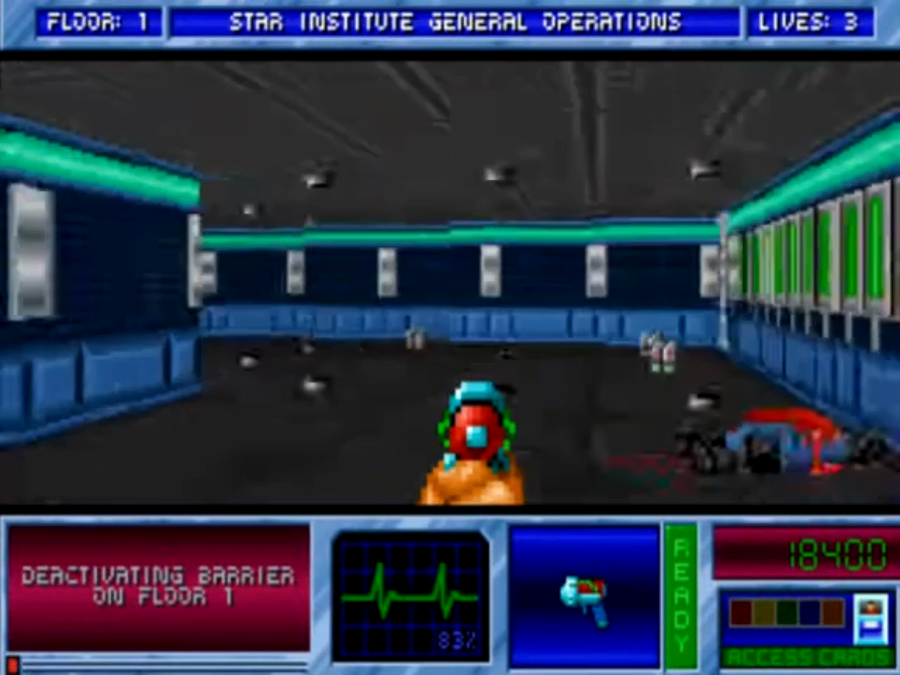Story Pile: Blacklist, Again, Again
Alright, so the Blacklist. I’ve talked about it before. It’s a bad show. It’s a clueless show, a show that establishes itself with an interesting hook, then spends subsequent episodes constantly and effortlessly making sure it is less and less interesting. The first episode introduced us to the tension between a woman finding that the most wanted criminal in America was turning himself over to the authorities in order to personally explain to her some immense truth that started with the discovery that her husband of a number of years was hiding a secret from her that included hidden cash, weapons, and passports, in her house.
There’s no great secret or brilliant plot at the heart of The Blacklist, it’s just a fantastically dumb series that follows inthe pattern of CSI of each researcher finding one random thing they can build a whole episode around, and that’s what you’ll find if you bother to watch it. Any given episode has about one idea, and the rest is shaky-cam and mediocre stable characters orbiting around James Spader and making it look like they know what they’re doing as they build towards this season’s mysteries and revelations, to see the cool twist they’re building.
(There is never a cool twist.)
Continue Reading →Slurpuff
Competitive Pokemon is a wild place. Typically, competitive environments that aren’t made with an oversight body – like Smash and Pokemon – wind up developing clouds of house rules. In competitive Pokemon, a common and popular format is to comply with the Smogon University rules and guides.
Smogon has a few top-down rules that tend to apply to all layers of the game – some rules designed to keep the games finished in a timely fashion, some rules designed to ensure there’s a diversity of teams. One idea that they have is the notion of a tier system, where – broadly – Pokemon are divided up into groups that represent how commonly they are played when they’re available. What this means is that there’s one small group of the most powerful pokemon that muscle out all sorts of other options, then a larger group under that of the pokemon that are good when that small group are removed, and so on and so on. The tier system mostly cares about usage, but not entirely.
When Pokemon prove to be so powerful in one tier that they distort the game, but they don’t have a natural space in the tier above them, what results is a ban. This sometimes gets referred to ‘being kicked upstairs,’ because the pokemon is almost always still valid in higher tiers.
There’s a lot of competing effects that make a Pokemon good, and the game is such a complicated set of different, competing systems that it can sometimes seem a little hard to work it out. Particularly, if you look at the ban list of the lower tiers, you see some weird things that show up. First, you’ll see some Pokemon down in low tiers that are treated as very important by the game – Guzzlord, for example, has a lot of high stats and it’s in a special category called a Ultra Beast. Guzzlord’s slow speed and lack of type defense, though, means that in the lowest tiers of play, it’s still not good, and taking it to higher tiers will probably not be successful either.
It is in this space, astonishingly, that Slurpuff lives.
Slurpuff is not an impressive Pokemon. It is a little blob of a thing. It’s 51.9% round, if that statistic matters to you. It is at best a little dessert of a Pokemon, something in the same family as Vanniluxe, a pokemon primarily known for being complained about, because it looks like ice cream.
And in one of the lowest tiers of Smogon competitive, NeverUsed, Slurpuff is banned, for being too powerful.
It’s a combination of factors, but the main interaction is between Belly Drum, a Sitrus Berry, and Unburden. This is a move, a passive ability, and a held item. In sequence:
- Belly Drum amps your attack stat to the maximum, but cuts your health in half
- A Sitrus Berry, when your health is half or less, gives you a quarter of your health back, once, then it’s consumed
- Unburden when you lose your item, doubles your speed.
This means on your first turn with a Slurpuff, you take whatever hit your opponent can deal out (because Slurpuff is pretty slow), Belly Drum, then the berry kicks in and heals you for about a quarter of your life. Often this belly drum will be fired off without losing any health first, because opponents will often have to trade their lead to something that can deal with Slurpuff. Then, with your berry eaten, the Slurpuff’s speed is now twice as high, all for one game action. Now, your Slurpuff can just… smash the living hell out of almost everything down in NeverUsed, because it’s faster than them and can KO them in often a single hit.
That’s pretty much it; there’s more to it, other concerns that Slurpuff’s type and the tier makes it hard to deal with in other ways, but that’s your basic combo.
And it’s kinda neat that Slurpuff of all things is super dangerous and needs to be dealt with.

Here’s the better thing though. In the specialist format Little Cup, where all Pokemon are level 5 and only unevolved Pokemon are allowed, Slurpuff’s prevolved form, Swirlix, which is even sillier looking, and even more of an inoffensive little sweetbun, is also banned.
Because it can do all the same things.
Also, Happy Birthday, Angus. I know, it’s a bit early, but scheduling.
November Wrapup!
Aauuuup hot damn! November’s done with and now we’re sailing on into December! That’s some good news! Why is this article coming up now with two days more in the month? Shut up, that’s why!
First up, articles from November! What did I have going that I was proud of? I got to show off the excellent Commander Keen 4 and apparently continued what is now pretty much going to be a Commander Keen Retrospective (no, you probably won’t get that, who cares, whatever). I presented an examination on the character of dril, a post that was beaten out by CNN of all people. I also was pretty happy with the interesting question of my Wallet Game worker placement idea.
Then, there was a video, about Beyond Zork:
And there was a shirt! This shirt!
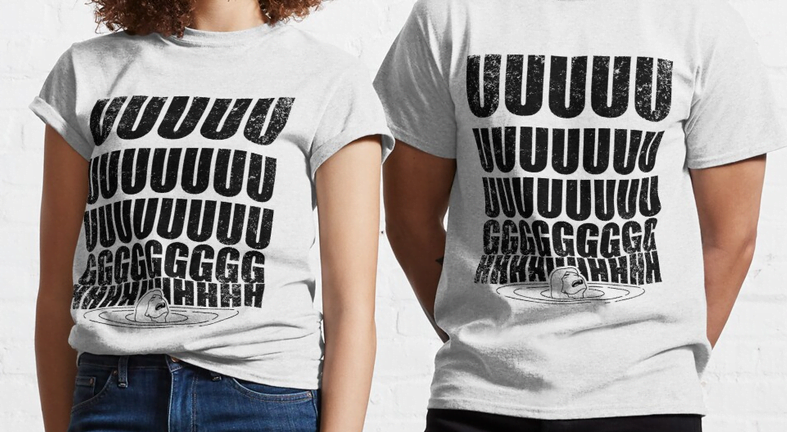
It’s about the way this year has made us all feel, apparently.
Anyway, back to marking for me. See ya tomorrow!
Game Pile: Beyond Zork
Hey maybe this will make it embed properly.
Or maybe it won’t!
the raw nerve of imperial existence
Content Warning: US Politics, general negative feelings.
MTG: Norin’s Impromptu Cream (Get Better Title)
Back in the day of Time Spiral-through-Shadowmoor standard, there was a deck I played in the casual room, and almost kinda thought about writing an article about, but I stopped writing for StarCityGames due to work concerns, and it never wound up happening. I think? Probably not. Ben Bleiwess would know better and I doubt he cares any way.
Here, lemme show you the three weird things that go on in this deck.
November Shirt: the 2020 Shirt
look, just, here
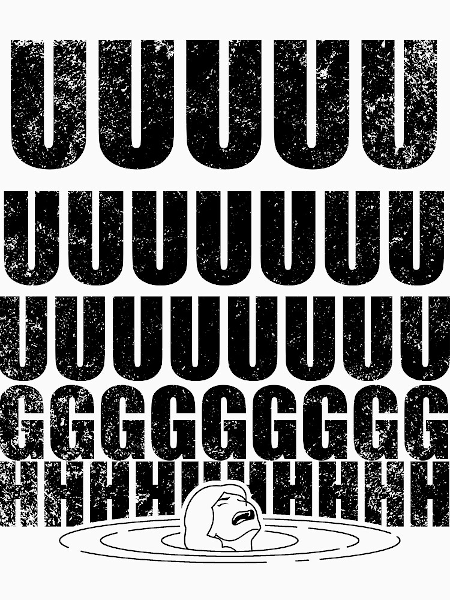
and here’s the shirt on like a shirt, shirt, word shirt is incomprehensible, whatever

You can get it in black text and white text.
Story Pile: The Big Short
This is one of those movies that serves as a kind of Fight Club test for me.
The movie doesn’t set off red flags, not in the same way as Fight Club. That movie is one where if someone espouses how much they love it, you have to hold your breath and find out whether they’re one of the fans who recognise how cool the movie makes Tyler Durden (who ultimately wins), or if they’re one of the fans who recognise how that’s a really bad thing.
With The Big Short, the movie is interesting, about a topic I find interesting, and presents it in interesting ways, as it restructures a complicated narrative of many moving parts into a simple, understandable, easily followed movie. What I wonder about, when someone says they love this movie, is what about it they love.
CoX: Heartbeep!
Time to time, I write up an explication of characters I’ve played in RPGs or made for my own purpose. This is an exercise in character building and creative writing, and hopefully interesting.
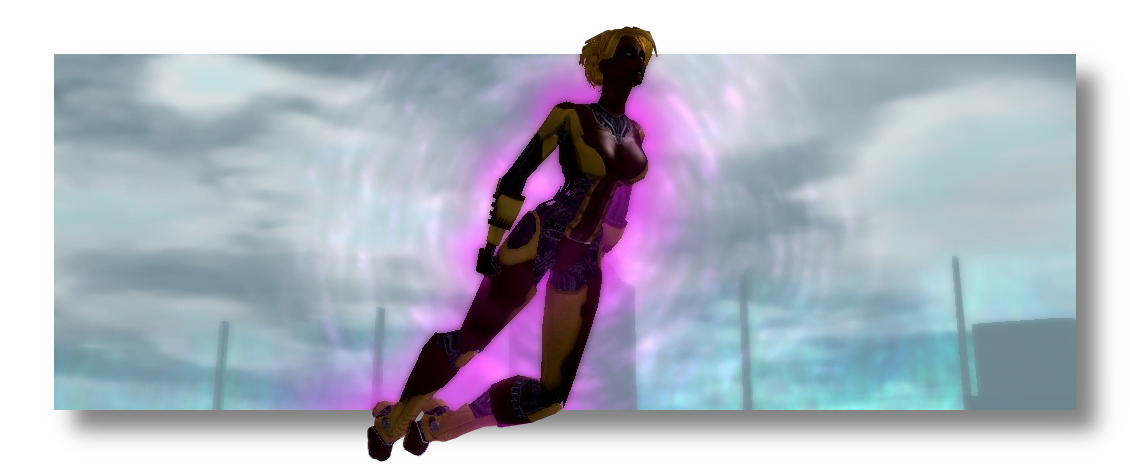
Dot is a bright, funloving, extremely geeky young lady, who’s prone to odd stutters and occasional lapses in conversation. This is because while she is a geeky young lady with a bright personality, she’s also a superpowered Clockwork drone from Praetoria that was handled through a variety of somewhat dubious projects on her arrival.
It’s not that she’s ‘really’ a robot. It’s not that she’s ‘disguised’ as a girl.
She’s a cute girl.
And she’s a robot.
And Dot has decided the kind of cute girl she wants to be is also a crime-fighting superhero robot.
How To Be: Wolf Queen Nailah (In 4e D&D)
In How To Be we’re going to look at a variety of characters from Not D&D and conceptualise how you might go about making a version of that character in the form of D&D that matters on this blog, D&D 4th Edition. Our guidelines are as follows:
- This is going to be a brief rundown of ways to make a character that ‘feels’ like the source character
- This isn’t meant to be comprehensive or authoritive but as a creative exercise
- While not every character can work immediately out of the box, the aim is to make sure they have a character ‘feel’ as soon as possible
- The character has to have the ‘feeling’ of the character by at least midway through Heroic
When building characters in 4th Edition it’s worth remembering that there are a lot of different ways to do the same basic thing. This isn’t going to be comprehensive, or even particularly fleshed out, and instead give you some places to start when you want to make something.
Another thing to remember is that 4e characters tend to be more about collected interactions of groups of things – it’s not that you get a build with specific rules about what you have to take, and when, and why, like you’re lockpicking your way through a design in the hopes of getting an overlap eventually. Character building is about packages, not programs, and we’ll talk about some packages and reference them going forwards.
And this month, before we talk about our subject, though I mean she’s in the subject of the blog post that you just clicked on so I mean what are we going to cover, suddenly a swerve and it’s going to be about trotting out pairs of characters that can be Bert and Ernie from Sesame Street. But see, this marks our twelfth How To Be, and it also marks the first year of this feature. It’s fun! I’ve enjoyed doing that!
And because variety is important to me, we’re going back to Fire Emblem. And maybe, being you’re one of my friends, you might be thinking that yes! I’m going to bring up ya girl Edelgard, who is… very, very similar to Hilda.
No, we’re talking about Nailah, from Fire Emblem: Radiant Dawn. And we’re talking about her because she’s cool, and she can do interesting things, and most importantly, because Fox likes her. I started with one of Fox’s favourite franchises, and then with a character she kinda didn’t like one way or the other? Terrible form on my part.
Let’s look at a Wolf Queen.
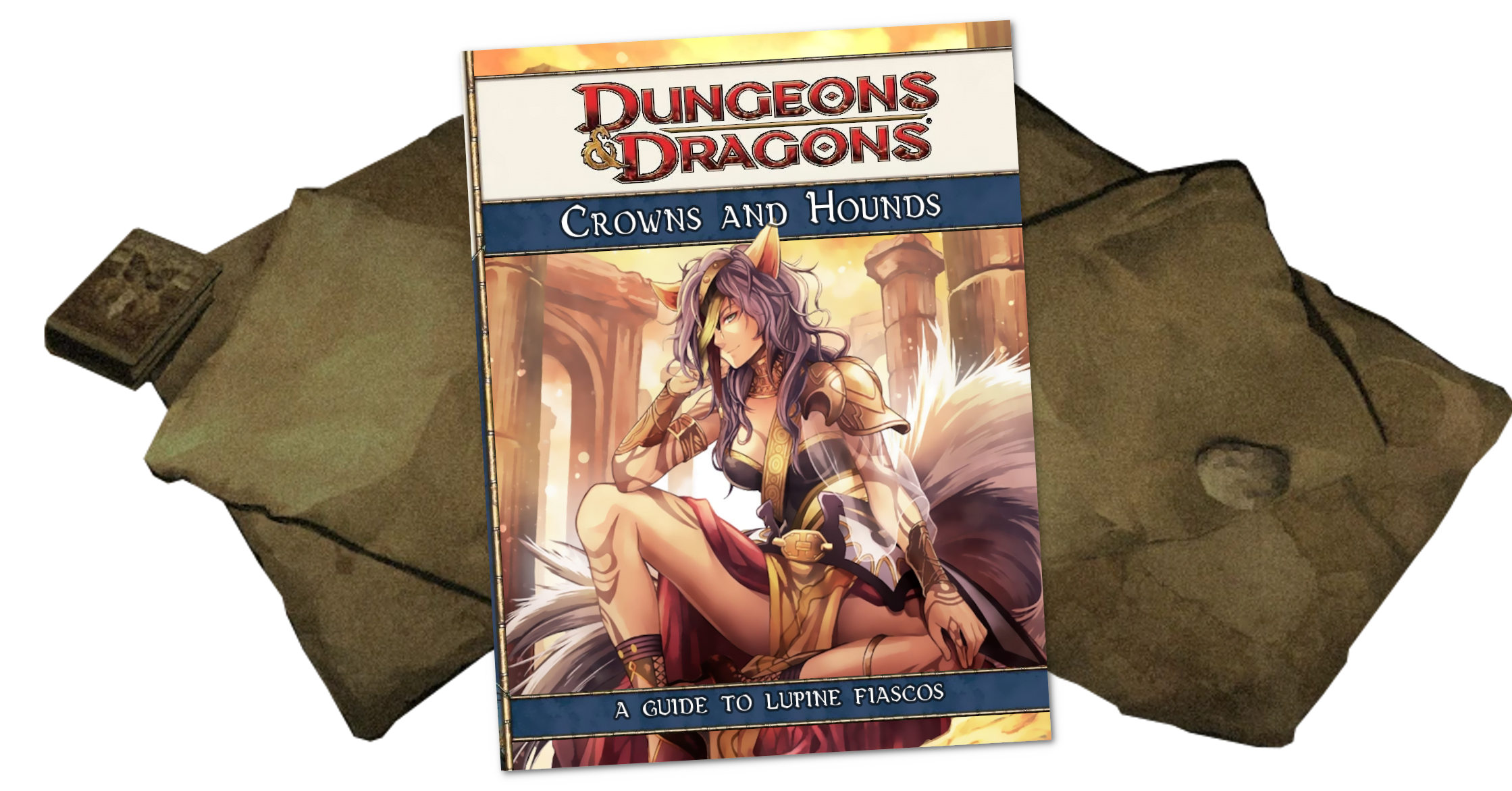
Game Pile: Carrion
é͉̝̟̤̼͍ͅv̗̯̮͓̹̩̹͞e͠r̸̦y̝ţ̳̳̫̼̝h̶̘͚͎̦̞͚i̪͓̻̼̕n̙̞̕ģ̖̼ ̢̠̮̠i̺s̲͠ ̮̮͎̖͞f̯̪̪̟͘i̮̹̗̠ņ͖̘̙̥͇̠e̹͇̞̥̭
Continue Reading →Create From Empathy
I’ve said in the past that the two motivations for creating anything are spite and horny. You either are mad that something doesn’t exist, or that something that does exists wasn’t what you wanted, or you had a deep and personal want for something so you made it because of that. Sometimes the thing you want is just the experience of ‘hey, can I even make something in the first place,’ sometimes you’re horny for praise, sometimes you’re horny for being seen as productive, whatever. It’s a want or it’s spite.
Once you’re making, though, I’d like to encourage you to try and build what you’re building out of a sense of empathy.
When I teach students about how to make things, whether it’s a board game (as a structured object) or something like an instagram account (as an ongoing practice) it’s very easy to get caught up on thinking of an audience as literally the people on the internet who find the thing. This is something I have to try and uproot like a tree stump, every time.
Your audience are not ‘the people who see your work.’ It’s not your followers, god help me it’s not your impressions on a tweet. Your audience are the people who, if they see your work, are likely to like it. They’re the people who will respond to your work if they ever get to see it. When you stop thinking of them as people who are responding to your work, but rather as the people who would respond to it, you can stop worrying about ‘why am I bothering’ but instead ‘how do I make sure this work is as good as possible for the people who haven’t found it yet?’
First of all, there’s a lot of stuff people create without thinking about how an audience might experience it, or participate in it. If you’ve made fifty pages of worldbuilding, that’s fine and good to have, but how many of those pages are going to be useful to the person you’re hoping will read it? Should you present them fifty pages, unorganised, or is it worth your time, is it respectful of their time and feelings, to go over what you wrote, and see if you can introduce ideas better?
Second, there’s a member of your audience you should have some empathy with, which is you. When you find yourself disinterested in making more of the thing, that’s someone you should listen to. When you find yourself tired, or sore, or bummed, and the urge to create isn’t overwhelming that, if you’re not playing with ideas, if you’re not finding yourself engaged with it… have some empathy with yourself.
You might just not be in the mood for it right now.
And if you’re never in the mood, maybe you don’t want to do it. Take what you learned, and move on.
We often think of our past projects and ideas and ostensible commencements of things as some kind of failing, some kind of moral weakness. This is pretty silly, and it’s a lot like trying to make people feel bad for unfinished games in their Steam library.
We’re all just here, playing with pieces.
So be kind to yourself. And to the people you want to share with.
Wallet Game Worker Placement
Earlier this year, Perennial Clever Cloggs Button Shy put out a competition to make an 18-card Wallet game that wanted to be a worker placement game. That is, a game where placing a ‘worker’ gives you an effect, and it deprives other players of that effect. So if I put my worker on the 3 Pineapples square, and you wanted 3 Pineapples, you have to find some other place for your Pineapple needs.
Don’t know why Pineapples. Maybe it’s just a funny word. Or maybe lots of worker placement games are colonialist.
Anyway, so I thought about how I might do this without a large, standardised board, and how to do that with a tiny number of cards. Here’s what I came up with.
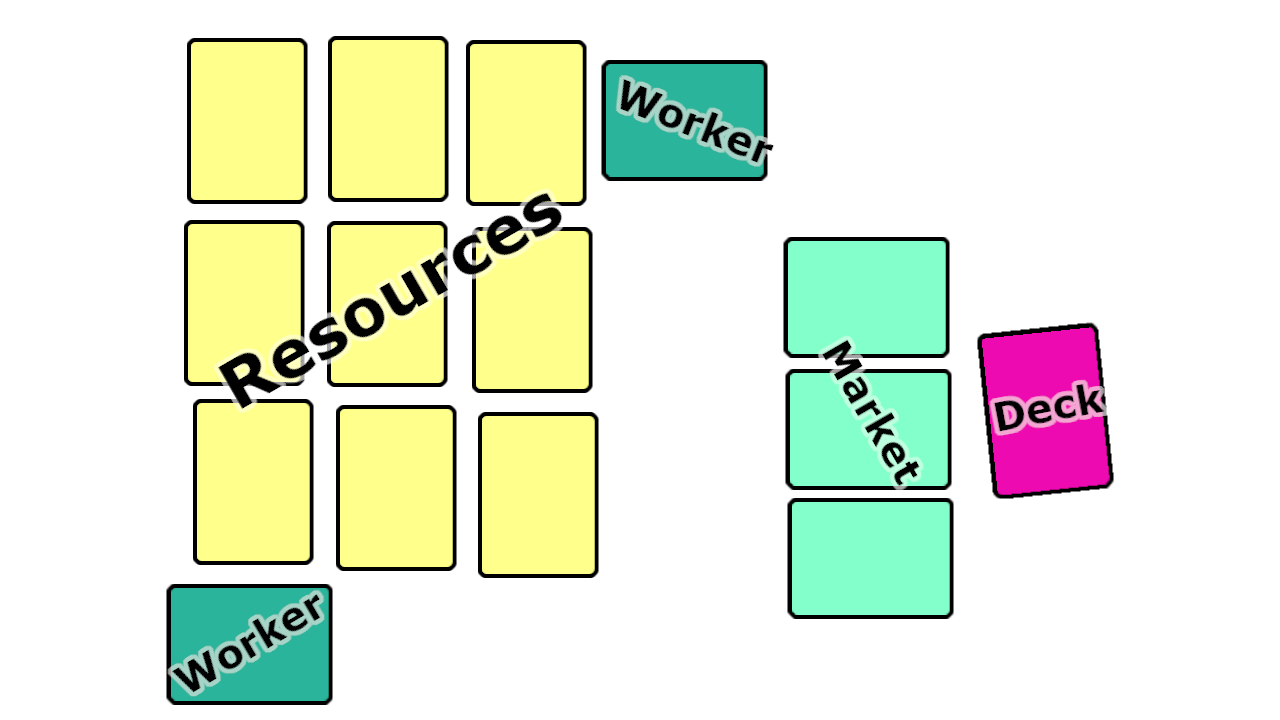
The game is divided into four basic parts: your worker card, which can be set to represent four different types of worker, depending on its orientation. Each worker card is split into two halves, and each side is different. So depending on orientation, the card could be A, B, C or D. There’s your four worker choices.
The resources can be shuffled up and arranged however based on each game. Maybe it’s turf or territory, or network nodes, or even a yearbook photo page, meant to represent social connections in, like, I don’t know, Mermaid Prom. Resources can be flipped up or flipped down, to create ways to deplete resources, or transform them. There’s room for them to vary.
Each player gets to place their worker card at one of the two sides of the board, 90 degrees from one another. They get everything in the line they choose, except, the card they have in common.
This gives you resources or opportunities to do special things, which I’m not sure how to track. You can make it so a resource card may have something as potent as ‘win the game’ on it – so you’re trying to jockey things into position where you can force your opponent to pick things you’re not.
What you do with the resources could be like Mana from MTG, where the resources go away at the end of turn, so each turn you’re trying to make a particular combination, to buy a card in the market, or enable something. You add cards from the deck to the marketplace as they go away.
This is the idea. You’re probably aiming to acquire some cards from the Marketplace, and you’re doing it by manipulating the resources with a small number of worker options.
Game idea intrigues me. I may give it a shot if I get a theme I like.
Skub (in Tabletop)
There’s this idea from The Perry Bible Fellowship, which is one of those comics we talk about in the context of ‘one of the good webcomics.’ It is also responsible for the origin point of one of the most widespread neologisms in internet culture today (‘weeb’), but lesser known is the term Skub.
Skub typically is used in gamer circles to refer to something people fight about, often extensively, which does not matter, and does not have serious impact. It’s an idea that clearly picked up in tabletop conversations because we are a ridiculous people who will have extremely heated arguments that attempt to prove our own emotional states as factually correct rather than be willing to openly admit and respect our needs, or to respectfully handle conversations about ideas that aren’t themselves necessarily an attack. It’s tricky stuff, but we make up for it with years on end of extensive, pointless, preposterous fucking fighting over bullshit that doesn’t matter, which we then bikeshed super hard.
Thing is, in tabletop gaming, there’s a lot of stuff that’s player decisions or preference that we tend to try and cook into ‘right’ and ‘wrong.’ This can get super complicated, because it’s hard to tease out where some of these arguments have boundaries.
For example, Dungeons & Dragons is the largest corporate driven TTRPG in the world, and has been pretty much forever, and it is as a wing of Hasbro, part of a complex interconnected set of brands and franchises, some of which have been sketchy at best and some of which are having to do a lot of work to try and make good on deeply vile histories, like Monopoly. There’s an entire wing of how Hasbro wants to be a good corporate citizen which is itself, a big conversation that has an assumption in it that such a thing is possible. Then you can go one step above it, like how Dungeons & Dragons is itself an ecosystem all of its own, and whether things like encouraging others to create for it is an act of control or an attempt to address a power imbalance. There’s a whole conversation there about whether or not it’s possible for Dungeons & Dragons to be capable of good agency given a poisoned root. These are all big and complicated conversations and some of them only work with spherical gamers in a zero-G environment.
But then you keep going down the line and you get into conversations that are definitely definitely skub, but which are being treated with the same tools and academic rigor as if the solution to racism is in the shape of a dice. What can exacerbate this is the work of people who are working hard to create in these spaces, where it’s not hard at all to, thanks to time spent working on critical tools, bring to bear long sentences that translate to what I enjoy is factually correct and what I don’t enjoy is wrong.
Personally, there’s a lot of skubby opinions that I like a lot to talk about, because if I know your flavour of skub, the stuff that matters to you that doesn’t matter in general, I know you better.
Anyway, I don’t like completely unstructured character building. Not my flavour of skub.
Story Pile: Lower Decks
I haven’t watched Lower Decks.
Dinosaur Deck Deconstructor
Been thinking about a game that is cooperative, reading-light and kid-approachable.
Okay, so here are some things about games with little kids. Hands are hard to manage. They have hands of a particular size, literally, and that means being able to fan cards can be challenging.
Here’s the idea.
The game is built around a single central deck. This is probably loaded and slugged.
Each turn, you flip some cards off the top of the deck. This represents the natural movement of the dinosaurs in the game. They appear, they move around, they interact with each other. Mixed in with this are cards that represent problems, or dinosaurs separated from their groups, or with groups that are too large. The idea is that the dinosaurs have natural relationships to one another, and you want to make sure the populations are stable for long-term growth before you leave – which means things like ensuring herding animals are close to one another, and hunting animals aren’t sharing too much space.
I’m seeing it as a little bit Tetris-y. The cards as laid out interact with one another – some dinosaurs scare other dinosaurs in their row, some make space for others, some add cards to the space, some problems limit the cards in a space. And they slid up, tetris style, to get a horizontal and veritcale space.
What each player does then, on their turn is either take on one of the problem cards, that now imposes some limit or restriction on them until they solve it, or they pick up a tool or use some ability that lets them manipulate the dinosaur cards. So you may be able to guide some gentle dinosaurs with just your basic abilities like food and water, but you may need like safety equipment to guide a big ole T-rex.
There’s one ‘big’ problem that has multiple cards to it – you need to be able to handle that big problem, and that means that you need players to develop and build up solutions to problems over time. That might be the ‘final’ problem of the game, the thing that you need to beat to win, or the timer that runs the game out. The timer could be a season – when enough cards have been cycled through, you change the season and after a full year you’re out of time.
There’s a challenge when you make cooperative games, because you need to make sure that it’s not possible for one player to make a decision for everyone. You need each player to have information that’s exclusive to them, without it being too difficult a load of information. You need there to be unreliable parts too, so play patterns vary.
And that’s where the problem kicks in.
The easiest way to do this is hidden information. Players getting to make choices based on knowing things other players don’t. And the problem is there, hiding information is harder for little kids.
As far as size goes? Not sure. This game could be a great big indulgent 120 card game, but it could also be a much more modest 54-73 kinda game, like Dark Signs or Burning Daylight.
I’ll think about it.
Empty Pockets
Been looking at a lot of first person shooters from the 90s lately.
One of the defining elements from the FPS genre since its kickoff point has been the arsenal. They’re the thing that you see the most throughout the whole game, and the weapons you deal with are always going to be reflective of the game’s design, and as much as these games have them, the character’s personality.
Since the era of these games becoming cinematic, so usually since Half-Life but not always, there’s usually been a beat where the game takes your weapons away from you and resets your arsenal to nothing. This beat is usually used in the more linear, narrative FPSes (which, really, at times they feel like they’re a different genre to your exporer-based Wolfenstein-heritage Doom-likes but that’s for another time), but it means that in both the beginning and middle of the game, you have a chance to get to know what your character has to fight with when they don’t have anything to fight with.
Here, then are three different options and a paragraph of me overthinking them.
Blake Stone’s Gun
In Blake Stone, a Wolfenstein-engine not-totally-terrible game, you play Blake Stone, a space cop who Blakes Stonely. It’s not a bad game on its own though it does show some ways that transferring game systems from one frame to another don’t necessarily work. In this game, you’re meant to be basically Space James Bond, and I want you to think about how, in the context of a exploration game built on a kind-of-stealth engine, you give sci-fi future boy Blake Stone a no-ammo weapon that he’s going to turn to by default and what you get is a kind of fancy taser with no ammo limit and a sort of momentary recharge?
It’s weird to think of Space James Bond as being so gadget-free, really.
This is a weird one now I think it because surely Blake Stone would be a great throwback to make a Build Engine game out of now because he’s camp and cheesy and could really benefit from being given a Build-Engine style nonsense malarkey arsenal.
By default? He relies on a super-gun, that definitely can’t interrupt the Gun-Ness of the game. No variation in gameplay form, and it builds the point that Blake is just A Dude With Guns.
Quake Guy’s Axe
Uhhh
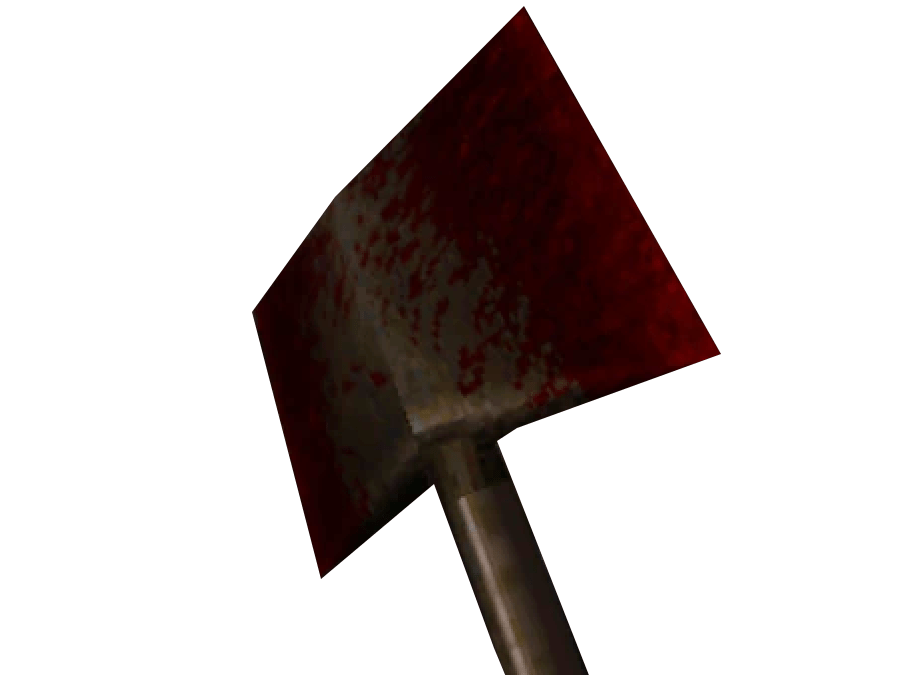
why do you have that here
The Mighty Boot in Duke Nukem 3D
Alright, Duke Nukem 3d has a lot of problems, and the melee weapon is one that’s absolutely not fun to play around with – like kick-a-lot runs sound like terrible amounts of unfun, with that melee attack feeling so impotent at anything but breaking toilets without wasting ammunition.
But.
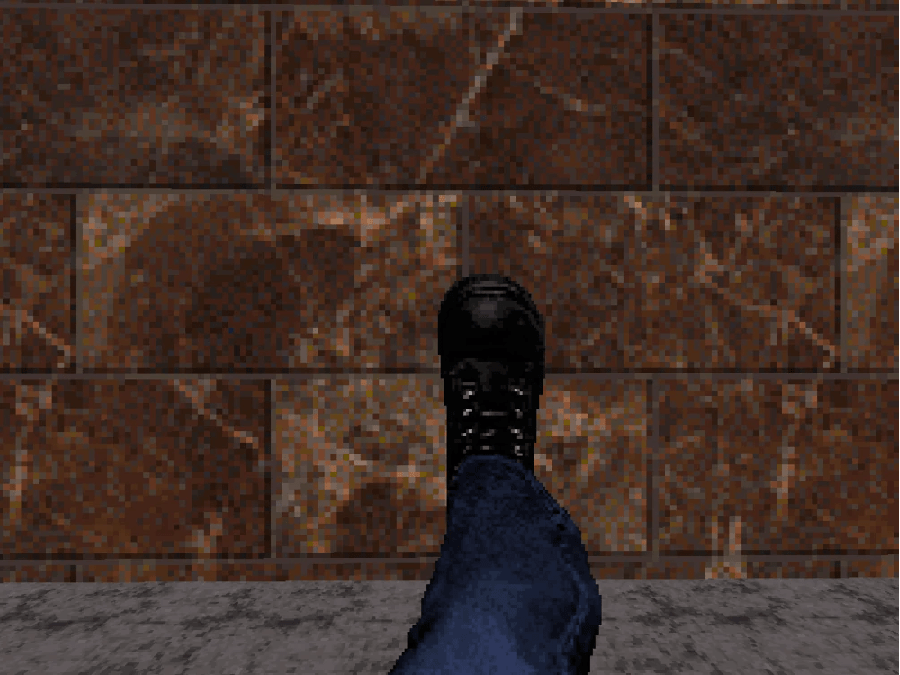
But.
I will say that Duke is actually wearing boots that look like they can deliver a decent kicking.
The Knuckledusters from Doom
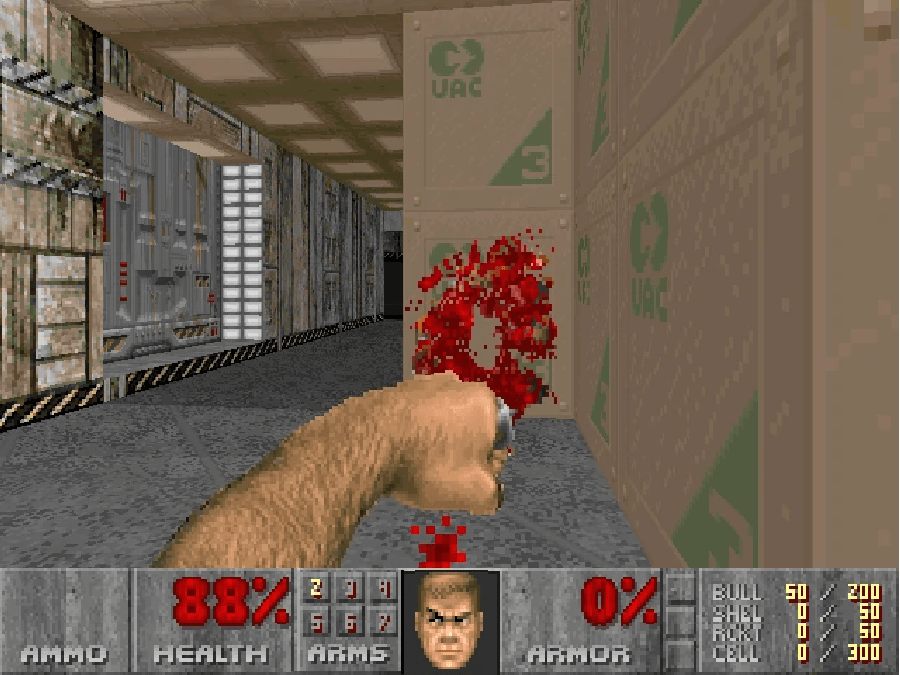
By default, the Doom guy has a weapon that isn’t the chainsaw, and isn’t the implacable, super-strong terrain-breaker you see him toting in later games like Doom 2016. He’s got a punch, which suggests that when faced with the forces of Hell itself, he would absolutely throw hands, even if that’s the most useless thing in the world to do (and it’s kind of not, there are absolutely punch runs of Doom). The thing that’s kind of charming about this is the knuckledusters you see, which suggests that Staff Sergeant Flynn Taggart, who had already been exiled to Mars for violently assaulting a superior officer, decided to carry with him in his personal effect another weapon for personal combat.
Don’t change, Flynn.
The Crowbar from Half-Life
Okay, this is seen as an ‘iconic’ weapon, in that you can like, buy things with the symbol on it, and it’s taken on a memetic quality as if it’s somehow an impressive demonstration of badassery from Gordon Freeman, which is kind of weird? Because on the one hand, yes, Gordon Freeman has carried that crowbar around through a lot of impressive locations, but he himself has almost always relied on it and other tools to accomplish some violent ends, and almost always relied on manufactured, precision crafted, point-and-use-it-correctly firearms.
What I have learned about guns lately is that when you start using them, the most common mistakes from them is not knowing how to handle the recoil, so the gun bounces backwards and very often breaks your arm or ribs because guns by definition have kick.
Anyway, without the crowbar, Gordon can’t attack people. He can throw some objects (to no real impact), but he’s always reliant on the HEV suit. But without a weapon, Gordon doesn’t even think to, or try to, throw a punch. It’s interesting because it kind of underscores that Gordon Freeman is a person who needs a weapon to hurt anyone.
Lo Wang’s Everything
Look, Shadow Warrior is a game I’d really rather not remember too much. As far as the ‘holy trinity’ of the 1990s Build Engine games go, Shadow Warrior is the one that I don’t want to revisit. But while I hold my breath and dart into the room like an office toilet, it is worth noting that Lo Wang has one of the best claims to personal badassery in this lineup because when he’s down to Not A Gun, he breaks out a sword and has fists that attack fast enough to stunlock some
uh
Some bosses?
That’s weird.
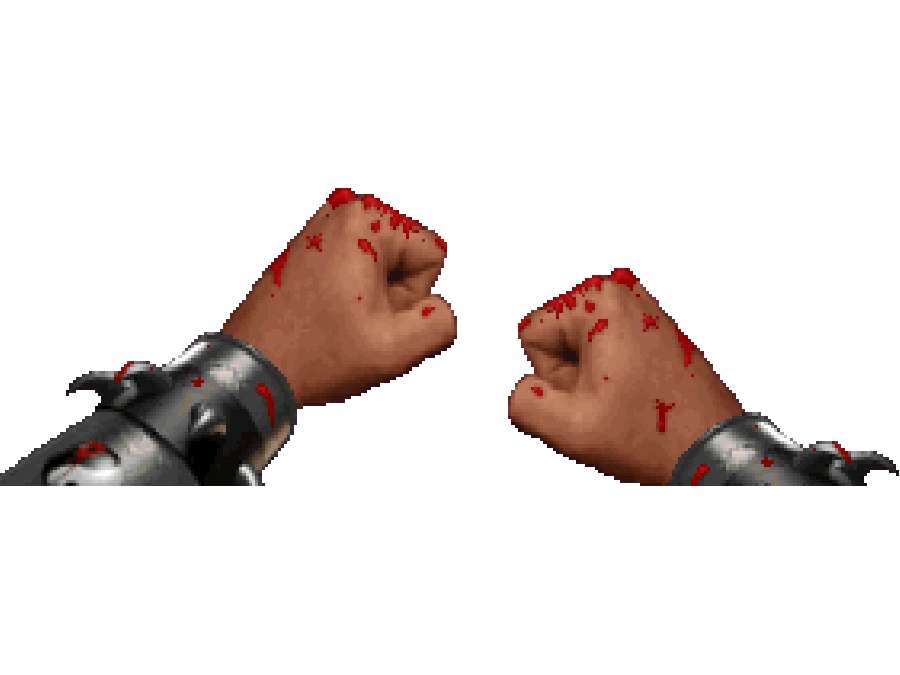
Anyway, point is, Lo Wang as a character is super unpleasant to talk about, but as far as his claims of being an immense fighting force badass goes he can back it up.
Game Pile: Krush Kill n’ Destroy Extreme
Videogames are weird as an art form.
When you dig into the history of most art forms, there’s a very clear point where our records go ‘here b dragons.’ When it comes to film, we’re pretty confident that roughly half of all film from the silent era is just lost, and all the record keeping and attribution is deterioated and badly kept and it sucks. That’s film, a medium that’s reasonably new. When it comes to videogames, though, thanks to a combination of existing privilege structures and the inherently replicable nature of internet data, there are parts of the history of videogames that are preserved remarkably well.
This means that there are some times when the spread of videogames can kind of look like a sort of sequence of little popular explosions. First Person games tended towards RPGs until the little lineage shown in Children of Doom by Campster. You can often point to instigatory events that caused specific sequences of triggered events because games actually document their inspirations or technological licensing of engines and whatnot. That creates an interesting, almost cladistic model of game development. You can point to small windows of time when lots of games happened really quickly, and see the ways they’re related to one another.
It’s often seen that the 90s were the day of the FPS, but there were other genres, other unfolding branches of the tree, and one of them happened in strategy games. There was a tend towards war games being slow, turn based, mathy and strategic affairs, until the creation of Dune 2 (1992) and the (comparatively) slow follow-the-leader from Warcraft: Orcs Vs Humans in 1994 and then Command & Conquer in 1995.
That’s right, folks.
We’re going to talk about a strategy game.
We’re going to talk about a real time strategy game.
We’re going to talk about one of the Australian made real time strategy games from the late 90s.
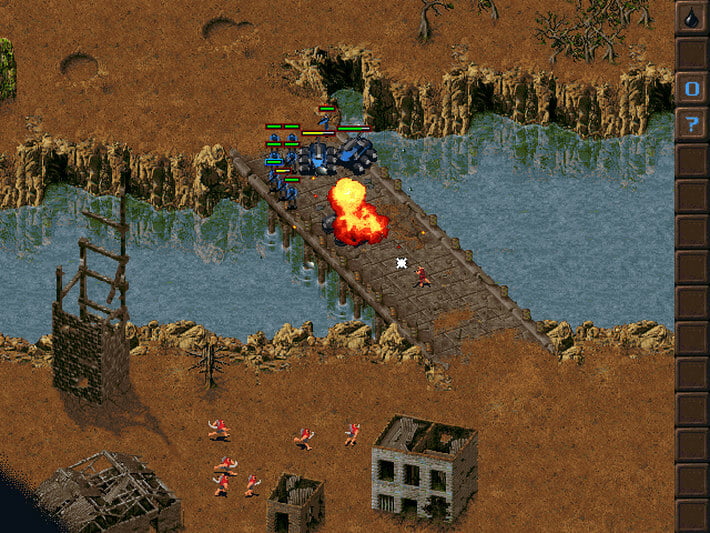
Burying ‘Good’
I’ve been writing on this blog now for weeeooo seven years and it sticks out to me every time I go back and review writing, even recent writing, just how often I’m willing to drop the words ‘good’ and ‘bad’ in discussions of games. It’s a reasonable impulse, because those are useful handle words.
It also comes from a defensive space, and I’m kind of embarrassed about it.
I teach about games. I teach students and ask them to stop using the word ‘good’ when they want to talk critically about games, or ‘bad’ because those words are big baskets with a lot of possible meanings and it’s not clear. Now, obviously on my blog I can have a jocular and funloving tone, whackyhee, but I still realise that I reach for that basket myself not because I don’t have a better way to describe the games I’m talking about, but because I’m often left needing it as a sort of waving stick to throw for an approaching dog.
I feel a lot of the time I need to be careful not about calling games good or bad, but failing to call them good or bad. I’m honestly a little more comfortable with ‘I hated it’ than with ‘this game is bad,’ or ‘this game fucks up this part’ because there at least I’m talking about a detail, I’m divining an intention and trying to explain it (which is, itself, funnier, but at least Roland Barthes has my back there). I am left, still, now, feeling really bad if I criticise a game if I don’t at least put something out there to signal to some arbitary, imagined reader, that hey, if you like it, I don’t mind, that’s okay, this game has Likeable Qualities, which
is dumb?
Like, yeah, there have been people who shouted at me over not being adequately courteous to a videogame, and a few of those are still in my circle of friends, but most of them aren’t. And the people who aren’t, they’re expressing something legitimate in terms of feelings but the idea my opinions aren’t acceptable isn’t the legitimate outcome of that. When I get those reactions, I need to recognise what I’m actually being yelled at about.
I don’t think I’m going to drop the word ‘good’ on its own? It’s a solid little word, and if I want to give you a general, leading-paragraph impression, like ‘oh hey, it’s fine, it’s good’ then you should be able to parse that out. But it’s a word of moods and tones, a basket word.
Really, what I want to fight with myself over is that impulse to be defensive and afraid about the idea of stating my opinion when here, seven years from start I know that there are people paying to read this.
Productivity Today
I feel like I haven’t been very productive today.
Or this week, really.
I mean as I write this the government just announced a rule saying that travellers coming to Australia need to be quarantined for a fortnight. I also spent three hours on the phone today talking to my supervisor about teaching, and then another hour going over my readings. Then I spent another hour getting discord game running technology going.
I have done stuff today.
Last night, I recorded an hour of a podcast, with research and tasks and all that stuff. It was hard and it is going to be hard to edit. It’s going to go up soon. By the time you read this, this podcast is probably out.
But I haven’t written much.
I think there’s a lot of good reasons to think that I shouldn’t be producing right now. Undeniably, as someone who doesn’t handle apocalypses well after the ones I already survived, it’s going to be hard to handle this one. I could just stop writing and nobody would judge me for it. Maybe patreon numbers would slacken, but you’re all so nice I don’t think that’s the case.
What I’m going to do is put this thought down here, and throw it into the future. Months from now, this time in March, when things were, I bet, ‘not so bad.’
Writing every day is hard and some days what you write isn’t that great. But we’ll look at this again, in a few months, and see what we think of it as a little time capsule.
EDIT: I wrote this like, four months ago, I think and boy I did not expect how long this week was going to feel.
It’s Actually Victory Wine
The fact that you know what that subject refers to is a sign that you have brain worms, and so do I, and if you didn’t recognise the source, but did recognise what it means, then you’re part of the spread of those worms.
There are a truly stunning number of quotes in our common discourse that can be attributed to the digital pen of the Twitter user dril, aka wint, aka no I’m not going to go provide the known information about this person’s real identity after Homestuck doxed him and boy isn’t that a sentence to even joke about, good god, what the living hell. dril (stylistically, lower case d), is a twitter user who’s responsible for a number of really widespread tweets, but also specific phrases that themselves now feel like they predate his 2008 account creation.
Have you heard someone say ‘I’m not owned, I’m not owned?’ How about ‘corncobbing?’ ever been told to ‘spend less on candles?’ Does something ‘smack of gender?’ Do you know anyone who’s ‘faced god and walked backwards into hell?’ Do you know how important it is that Wario is a libertarian? Is jail isn’t real? Do you demand that someone show themselves, coward, for you will never log off? What about your fears of the Skeleton War? Are none of you free of sin? Do you know how heavy your heart is when you announce the celebs are at it again? Drink precisely one beer? Zero difference between good things and bad things, you fucking moron? Is your problem that you’re perfect and everyone’s jealous of you? Turning a dial marked racism? Sorry, sorry, I’m trying to delete it?
Do you know how unlikely it is that you’ll ever get to fuck the flag?
Come fuck the flag!
— Rogue Betsy Ross (@RogueRossHouse) February 2, 2017
This isn’t even a comprehensive rundown of common memes that trace back to dril. This is a glance at his wikiquote page from 2008 to 2014. This is Shakespearean.
dril is a prolific comic writer and sort of despair poet, whose medium is twitter, which involves not just reflecting on the culture of twitter but also the way that twitter users behave when presented with a platform to finally vent their thoughts. It’s also super fucking postmodern, where the fact that tweets are created by a person who is relating their own life introduces the fundamentally unreliable narrator, which dril then milks for comedy, and absurdity, and uh, through that, more comedy.
I reflect on dril sometimes, because there’s a way that the jokes the creator makes have spread well wide from their source. Dril has now told jokes that are seen as kind of fundamental to twitter – not just made about and of twitter, but now the kind of joke that people who use twitter recognise, even the ones who are several steps removed. Sometimes his quotes are taken entirely out of their context and used by people who don’t even realise they’re referencing him.
This is where things get really weird.
We have an example in history, though, of this kind of thing. In a medium, someone who starts as a parody that mocks a familiar form, something we all recognise. dril mocks the idea of the self-important, politically engaged dumbass, the metaphors made by the so-called intellectuals that populate twitter, or just the extremely petty people who document their own largely unremarkable lives with extensive crisscrossing feelings of resentment, old grudges and attempts to restructure their personal narratives such that make them. That mockery, however, has been so effective that now, dril and his jokes are told by those people, people who recognise their own ridiculousness (ha ha, unless?) and then becomes part of the shape of that ridiculousness.
What I’m saying is that dril is Homer Simpson.
EDIT, UPDATE: Okay, sigh, so
So it seems that CNN is now referring to the Trump leavings as ‘Adult Sons,’ which is, as is being pointed out, evocative of My Large Adult Sons.
i have trained my two fat identical sons to sit outside of my office and protect my brain from mindfreaks by meditating intensely
— wint (@dril) November 15, 2013
That’s it. The dude’s now infecting the CNN style guide.
Story Pile: 99 Red Balloons/99 Luftballons
I did not know these songs were different.
For those not aware, there are two songs that are commonly seen as being the same songs – Nena’s 99 Luftballons and the English version, 99 Red Ballons. Now it is just literally an assumption that I made that the songs are basically the same. This is as many assumptions, pretty weird and misguided, especially when I already know about Simple & Clean and its predecessor unrelated song Hikari.
The basic narrative; the singer and a non-specific you buy some balloons, inflate them, and let them go, and then the world ends.
You know, a pop song.
In the German version, which Nena have expressed a preference for, the sequence of events is that the released balloons look like a UFO. One force comes to inspect them, then, rather than admit they were fooled by balloons, fire off some rockets to look impressive. The other side sees the display of strength, and, balloons forgotten, they retaliate with a similar show of force. And then it escalates and nuclear war ensues. The singer walks through the wreckage of the lost world, finds a balloon, and lets it go into the sky. It’s very sad and wistful and also extremely 1980s German, to hear tell of the spirit of the age.
The English language version introduces an interesting wrinkle: It’s specifically instigated by bugs in the software that respond to the threat and escalate things. Oh, sure, both sides escalate the same way (there’s a verse in German in the English version), but the thing that kicks it off isn’t a pilot feeling embarrassed at being asked to inspect balloons, but rather complications in an automated system starting hostilities without a human interface.
Now, Nena, like I said (or implied I guess), don’t like the English version, they feel it takes a different take they don’t want to go in. Fair. I personally really like the English version now, because I don’t live in Cold War Germany. I live in Australia, where it’s entirely possible a badly made piece of software will result in immense harm, because of a glitch, and our solution to that is to go ‘uh, whoopsy?’ The fear of us abdicating serious and important decisions to computers is kinda on my mind.
Okay, but why do I care about this? It isn’t like I’m a big 1980s German Pop Hits fan. I’m not aware of this stuff, maybe I know a Queen song or two, or one or two Bowie songs that wound up in videogames. I was introduced to the song thanks to Goldfinger, who have recently re-ceovered their cover, because uhhh, you know, all the stuff.
Now I’m a big fan of ska bands from the 90s and early 00s that kept their heads and grew up a bit. Perhaps obviously, I’m a big fan of this song, and I like this version best.
And this year is when I finally went ‘hang on a second’ and looked up the German lyrics and learned about the two versions of this song. One of them is very clearly, in my mind, a Nena song, and the other, a Goldfinger song.
What motivated this?
Me wondering: Hang on, was super scurry in the German version?
(It’s not)
3.5 Memories: GAY RAINBOW SNAKE
Eff it, sometimes I need one that’s a walk.
The way these posts tend to happen is I go into the garage where my physical D&D books are kept and I reach into the shelf and pull out a book I haven’t read lately, flip it open and see if what I see on the page reminds me of anything and this month we got the Complete Divine and the page I flipped to was the Rainbow Servant.
Good news, this class can do some beautiful bullshit, and it can do it while looking really gay.
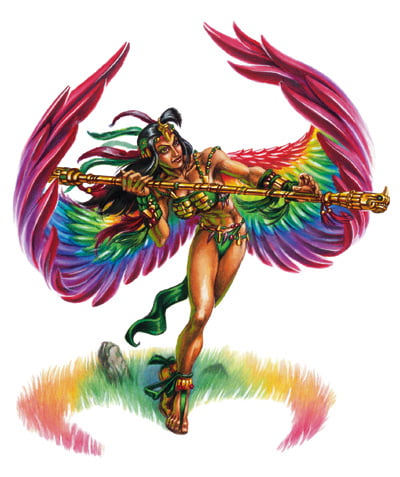
What we’re going to deal with her is a lovely overlap of unintended consequence. See, D&D creation was ultimately fractal; when you made a new class or a new race, you could test it against other stuff but as more stuff happened, you would always find combinations of stuff interacting in ways you maybe didn’t intend. Sometimes this meant you could find two different spells in different supplements did identical things, but one was much stronger, and sometimes this meant that a character could take two identical feats for double the effect. The copy editors at Wizards of the Coast could keep on top of this most of the time, but not always.
What mostly happened, then, was things were tested against a core of ‘what was in the player’s handbook’ and the more sources you added, the more wild things could get. That was one of the ways the game got weird, too – the more of the exciting and interesting stuff you started to include, the more weird byproducts you got.
This time around, what we have is the collision between the Complete Divine and The Miniatures Handbook and repeated in the Complete Arcane. The two parts at work here are the Warmage (a class) and the Rainbow Servant (a Prestige Class).
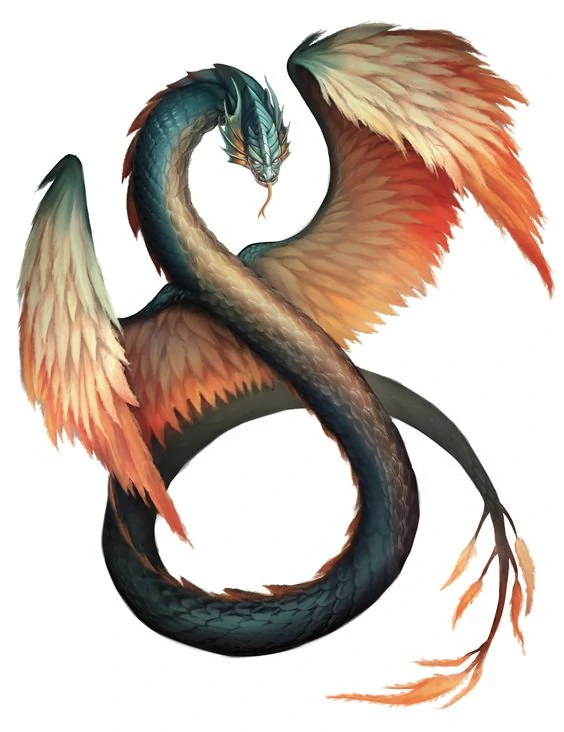
Rainbow Servants are spellcasters that learn from and benefit from a relationship with couatls, a type of sorta-kinda-Aztec-y divine monster creatures that are snakes, that relate to rainbows, and yet, suspiciously, aren’t shown in rainbows in their default art. Must seem gay. Anyway, these couatls grant special gifts to arcane spellcasters, and those casters get to be Rainbow Servants.
As written, the Rainbow Servant is a prestige class for arcane spellcasters that want to add a bit of divine vibe to what they’re doing, in exchange for eating some spellcasting levels. Most of the time, this tradeoff isn’t worth it: spellcasters that give up spellcasting levels need to get something truly immense in exchange. The stuff you get out of the Rainbow Servant is domains (which add spells to your potential repertoire), beautiful rainbow wings, and then, eventually, the entire cleric spell list added to your spell list.
For a sorcerer or wizard, this represents more options, but not more choices. These classes still have to spend resources to know those spells. Wizards adding the entire cleric spell list to their spellbook is a lot of power, but you had to give up four levels of spells to get there, and that’s typically not a worthwhile tradeoff. Sorcerers need to spend their very limited spells known to get those spells, but you already don’t have enough spells.
So, Rainbow Servant is a bit weak, and you might pick it up if you really really wanted the rainbow wings, for example, or you had a strong concept for a divine-arcane mixed up spellcasters.
But then, let’s introduce to the conversation the Warmage.
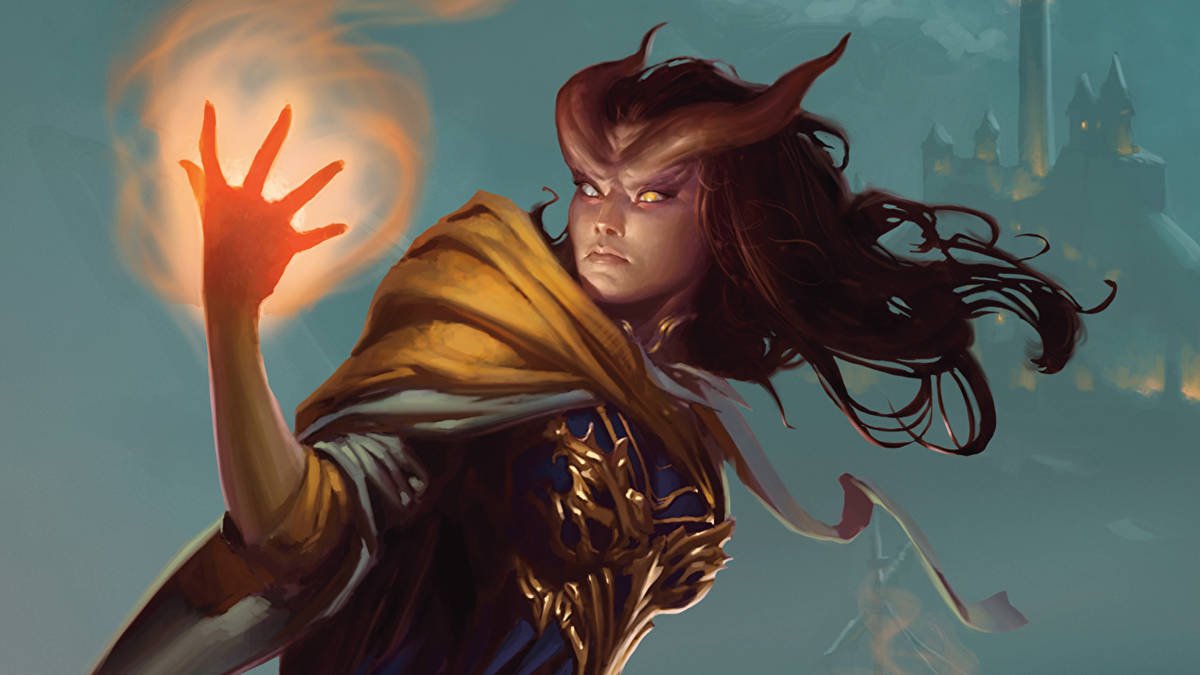
The Warmage is a class designed for a kind of different form of D&D. It was originally made to be a boomspell platform for the miniatures game, which used D&D combat rules to resolve a tactical miniatures wargame. Noticing that for fast combat, choosing spell preparation is a pain in the ass but choosing the right spell for the job on the spot is hard enough, they created a spellcaster who just always had access to all their spells, and made that spell list limited.
So.
If a warmage adds spells to their spell list – like with a domain – then suddenly, they can cast, spontaneously, every spell on the domain list that’s of a level they have access to. That’s pretty good. Then when they hit level 10, they have all the spells in the cleric list, available to cast spontaneously, and the existing warmage blast spells.
That’s really cool!
This build is also not especially strong, at least, not most of the time. You need to hit around level 16 before this happens, and at that point, you have a character who’s casting lots of different level 6 spells. You’ll never get access to 9th level spells (without some nonsense), but you’ll have enormous flexibility all the way up there – the best cleric spell for the job, all those lower level slots able to turn into useful buffs, and a bunch of handy special abilities to go with it.
Now.
This is clearly unintended consequence. The Rainbow Servant was not made to be a route to ‘late-game megacleric wizard.’ The Warmage was not created to turn into a support machine with the right level choices. These two elements were not created to interact with each other. One can argue that this interaction, being unintended, should be excluded. After all, if it wasn’t tested, it might have unforseen consequences. This is how a lot of MMOs behave: even things that are designed to replicate one another are often designed to not stack or interact, so as to prevent players from having too much of an effect. Check out how for a time, World of Warcraft had a standard list of ‘raid buffs’ (and may still have but I don’t care to check).
However, this is where TTRPGs have a freedom. You can look at how players engage with the game, and make those choices on the fly. You can decide if a player doing this stuff is eating up time. Hypothetically, you can even decide how in your game it’s okay for things to work out unfairly in one player’s favour, because that player may be less strategically minded, or not inclined to take advantage of the power, or bad at managing the information load. You might decide that it’s okay, because you can see other ways other things can be just as powerful that you are okay with. You can even decide to adjust this as the game goes on.
But don’t forget that sometimes, there are cool, odd interactions that some players may pick up just because they like the gay rainbow wings.
Quiet
I’m beginning to wonder if I have a word count per day.
I have taken of late to notice that my writing schedule, while still well in advance of now (indeed, this was written months from ‘now’ as you read this) is still being heavily impacted by the Everything that’s happening right now. So again, if you’re reading this in the future, by the time I wrote this, the sharks with legs hadn’t started raiding the coastal cities yet.
The thing is, some of the elements infringing on my time are expected; I’m sharing workspace with another human, which means I’m very selfconscious about doing any recording. After all, while they work, they may get a phone call; while I’m at work I need them to be quiet so I can talk to my students, and the result is that I feel like a real asshole asking for even more quiet if I want to say, goof around with an audio recording to see how well it goes. Add to this that I’m trying to proactively stay in contact with people remotely who I know aren’t having a good time.
Still, I did notice that when I fell into City of Heroes hard and into World of Warcraft briefly (not since Wardads of Draenor, don’t worry, I haven’t caught up), and even into the family Minecraft server I run, that my writing output was just reduced. I don’t think it’s quite so simple as ‘MMO time eats writing time.’ I think it’s a cousin to this: That time spent playing an MMO is very time-consuming, effort-light, and it’s not doing anything that inspires me to write.
I write a lot in MMORPGs. I write backstories and character builds and guides to how they work and test out tables and spreadsheets. I have a list of characters based on their favourite colours, foods, and disney movies. It’s not like I don’t create when I’m playing these games. I just don’t feel that what I’m creating is interesting to you or worth sharing.
Which is interesting in itself. I do not sit here on high, with this immense swell of knowing to share. I know that my knowledge and memory and my experiences and indeed, my writing, are all parts of this interdependent machinery. Inspiration is not an idea appearing in the dark, but rather the process of a long sequence of semi-random testing and experimentation to see hang on, what do I think other people will find interesting?
I don’t think you want to read that much about my City of Heroes characters. That’s why I only post about them once a month and rarely on-theme with the month. I don’t think you want to hear that much about Jimmy Buffett albums, so again, one a month. I try to keep the D&D content per-book spaced out. All these things are helpful guides to me to remember that what interests you is part of what I do.
This is why I ask ‘hey, what do you think I should write about?’ or ‘any requests?’
And hey, those are useful.
Game Pile: Commander Keen 4
Little by little, I’ve been working through the Commander Keen franchise, the PC Platformer that started out with a mathematical space-folding nonsense of a smooth-scrolling EGA platform game, and moved on to just being The Way The Lights Stayed On for many months at id software.
Mental Health False Positives Vs False Negatives
Content warning: I talk about mental health, as the subject maybe makes obvious!
Working on Black Jack’s Dungeon
If you follow my twitter, and like looking at me making things, you may remember seeing me work on a card game that looked a bit like this:
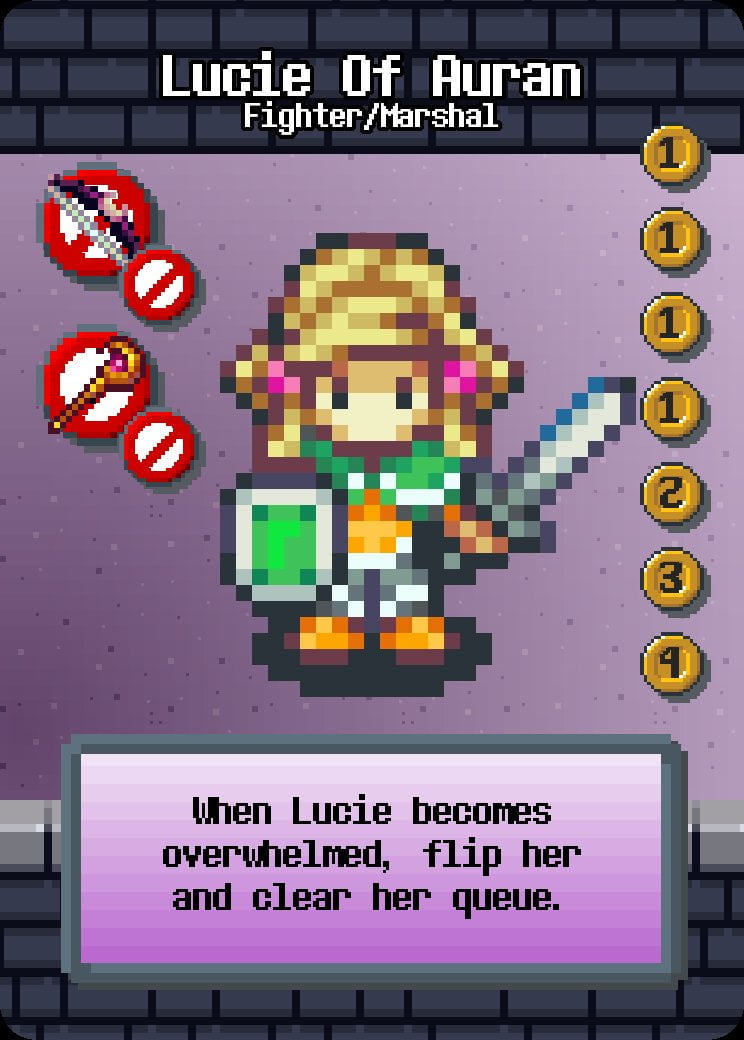
This game was called Black Jack’s Dungeon, and it was created and tested and then I made a proper prototype to test it out more extensively. When it comes to really large games, it can be hard to do playtesting and prototyping with just myself and my small group, because it’s harder to make the proxies work well. An engine that works okay when it’s shrunk down may feel really dull when it’s scaled up.
I made the prototype and found that there were some problems that the game was having when it was scaled up to full size.
- It was really slow! The original design relied on players flipping cards until they were satisfied and chose to stop, or overdid it, and ‘went bust.’ This is a bit like how Sector 86 works, but there wasn’t a solid way to handle needing to ‘dismiss’ enemies. Originally, players could choose to take monsters other players flipped, which gave it a cooperative element. This design is still something I can do, but it needs simpler enemies.
- It was really uninspiring! The heroes all had simple mechanical abilities, meaning that building a party was just a matter of what art you liked. Since there was one character who had a very special ability (turning into a cow when she was hurt), that made her stand out in a weird way alongside the others.
- The actual resolution mechanic for the whole game was just a matter of finding one card of many, and that was kinda boring!
- With lots of heroes, but you only getting three a game, it was kinda a bummer to never get to play with most of them, especially when a lot were really dull by comparison. The art was nice, I should make these things desireable.
- I used pixel art very sloppily. In a pixel art game, all art should use pixels of the same size (I am led to understand), and I didn’t. This made some of the art extremely unsettling to people who are inclined to notice this kind of thing.
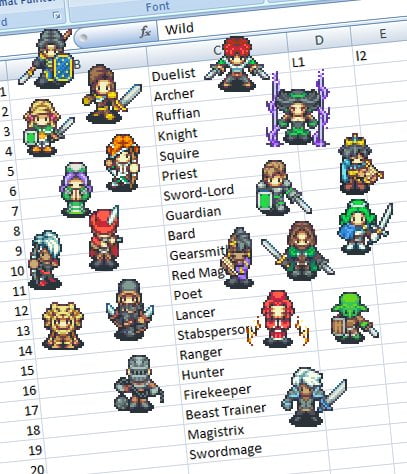
I went back to the drawing board. Obviously, it’s not been a high priority, but it has been on my mind more as of late, what with you know, the thoughts about games that are playable without a large group of people. Particularly, this game struck me as an interesting option to make as a strictly solo, big-deck game.
(Huhuh, big deck).
My current idea is to design a game where cards are adventuring parties – that you will have one card, with one to five heroes on it, and they have goals and types of prizes they will keep for themselves, when you send them into dungeons. Dungeons will be decks, set up around your little town. To send adventurers into a dungeon, you shuffle their card in, then, in another phase, you flip cards from the top of that dungeon until that hero card pops out – then you sort through the revealed cards and see what that means. Sometimes those cards are just smashed by the heroes; sometimes, they rout the heroes and you have to help the heroes recover.
This is the new mechanism in my mind, where you’re the town sending out and supporting the adventurers. It also gives more room for complex party mechanics, without needing to make 20 cards for all the adventurers.
Men Get Weird In November
Content Warning: Masturbation.
Story Pile: Letterkenny
So you was watching the first seven seasons of Letterkenny the other day,
Bullet Journaling This Year
… Kinda haven’t done it.
Look, Bullet journals are great. I deeply love my Bullet Journal. I have a nice little paper book that I carry with me in almost all the bags I have and I use it for, well, notepaper stuff. I make a monthly planner, which means I’m noticing when the seasons turn, I’m noticing the things in my life that a lot of systems automate. I’m tracking which week of the semester it is, I’m thinking about the next month.
This year I’ve done a lot of tracking of the year on the blog using the planning chart I linked at the start of the year, which I do think I’ll keep doing because it’s good for taking an overview on how the whole year looks and can have comments and notes. That’s super useful.
It’s one of those rare things that I can treat as a sort of ‘gift well.’ If my family want to get me something nice, some stickers for putting in my bullet journal, stamps for things like weekly schedules, or just decorative pens. As someone who doesn’t tend to be ‘giftable’ in a lot of ways (I mean, I have lots of videogames, and family members aren’t necessarily going to want to be experts on board games or videogames to try and get me something I ‘want’), the bullet journal is super handy. It’s nice, too, it means I think of my family as I take notes.
But.
My Bullet Journal is something I use when I’m not at my computer to make things.
So, this year: No development on the Bullet Journal, no new mods, no new layouts, no new habits. I did get some nice stuff, I have a lovely book, which is… hopefully going to be my 2021 book?
Of course, Bullet Journals are meant to be flexible. This is one of the things about the system that’s a point of recommendation, especially for neurodivergent folks. They don’t care if you mess up, or miss a few days, or miss a month. The system is designed to not structure your life to the book, but the book to your life. It’s okay. I’m going to be okay.
Why am I doing this here? Well, this is normally something I’d write about in my bullet journal.
But uhh.
October Wrapup!
Woo~ooo~Ooo~Oooo it’s trick-or-treating niiiight. Which it wouldn’t be wiiiise to dooo~oo~oooOOO~~ because of the globaaal pandeeemiiiiiiic~ You know now I think of it, it is a little weird to not see more Zombie fiction set on Halloween where they have to work trick-or-treating into the plot somehow. Anyway!
It’s Halloween and it’s the end of October, so it’s time to run down what I got done this month in amongst many other things.
First of all, articles. We did some interesting and different stuff this month, didn’t we? First, there were my readings of Hp Lovecraft writings with some critical response afterwards; I read Facts Concerning the Late Arthur Jermyn, aka ‘My Ape Grandma’s Grandson Was A Racist’, The Colour out of Space, aka ‘Space is scary and hicks don’t know when to be afraid,’ Nemesis, aka ‘hey, not so much racism this time,’ and The Statement of Randolph Carter, aka ‘behold the ancient days of a century ago.’ These were fun to do and reasonably easy, so if you want this kind of stuff, I’ll consider doing more readings on theme months.
I interviewed Erik the Bearik about Brinkwood: Blood of Tyrants, and that was lots of fun. I vented for a bit about ‘ghost hunters‘ and ‘real mystery‘ media, where I pulled my punches and avoided swearing about exploitative nonsense. I also wrote some companion pieces to my SCP Wiki video (and we’ll get to that), where I listed some SCPs I dislike and some I like.
I also did something special this month with videos! Since I’d been doing a lot of experimenting with video this year, I figured I’d bring them together and do five ‘different’ kinds of video.
For Halloween Forever, I talked about the game and about my relationship to Halloween as a cute, fun thing to be enjoyed. This was done by playing the video, then unscriptedly talking about the way the game made me feel. This was really easy to do!
For the SCP wiki, I made a simple video of a series of animations with minimal visual data, but with useful, clear iconography. This works well for representing text media, so maybe this is how I’ll tackle text adventures going forwards. This was also scripted pretty thoroughly before I made the video.
For Scarlet Hollow, I made a very quick series of pan-and-scans over stills from the game, which worked out well for explaining the ways the game worked. This was lightly scripted, but I did do a fair bit of editing to get the right flow down. This meant I could promote the game on kickstarter in an appropriate window, instead of holding things up. This also helped overcome my big problem with visual novels, where I often feel like I’m ‘wasting’ the medium to use video and voice to talk about a primarily textual medium.
Finally, Ai: The Somnium Files is like one of your more typical ‘essay-ish’ type videos, though not using the game to make some greater point. I scripted it out, read it, then used a loop of gameplay visuals which I overlaid with graphics to present more information about the game. I was able to weave in video footage and some captioning, which worked out okay, and I liked it.
I think I just talk faster than most video essay people. This video script is 2200 words, and the video is about ten minutes – but a typical audio reading, according to audiobook resources, is around 150 words a minute. Ostensibly, this should mean that this video should be about 15 minutes if I just read slower.
I’ll have to work on that.
For Gloomwood, this was much simpler to make. I recorded myself playing the game, as is, the first time. Everything is here – me messing up, me learning game mechanics, me exploring how the game worked from record to end record.
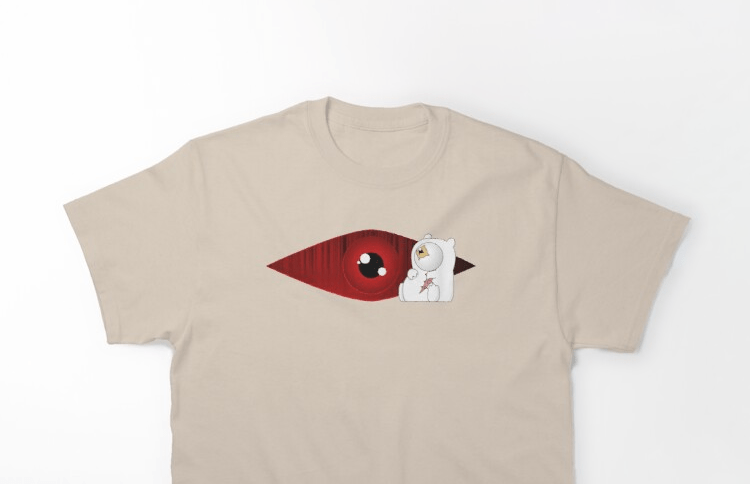 I also made a shirt this month! Then I was so happy with how one element on it worked out, I made it into a sticker!
I also made a shirt this month! Then I was so happy with how one element on it worked out, I made it into a sticker!
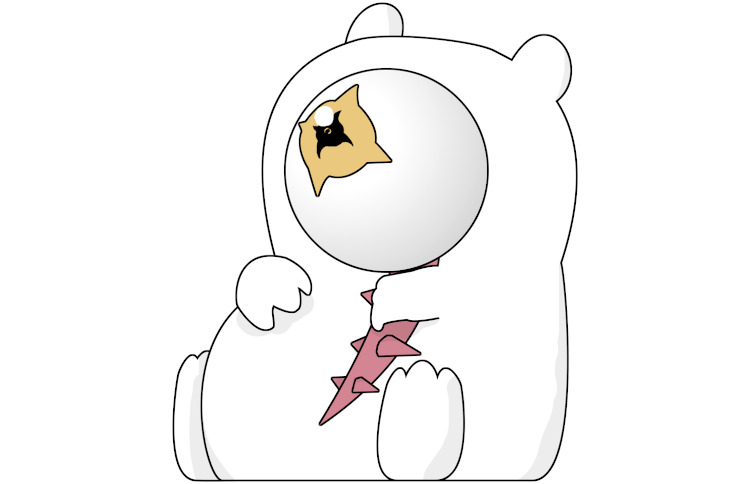
Aiba is a real sweetheart of a character, and I’m really glad to have gotten to play this game. When I make shirts and stickers, it’s often as ‘merch’ of my interests, and so this time I’m glad to be able to make merch of my love of this game.
And finally, personal life stuff? Well, October was busy – I’ve been marking pretty much every week of the month, and the marking has taken up a lot of time. I have a lot of students this semester, and they’re under a lot of stress, which has meant there’s been a lot of late-night mix-ups, or two AM calls from students worrying about how to get things working.
October was nonetheless a lovely month to catch up with some movies and shows I really liked, it was a wonderful experience in video making, and I enjoyed my recordings as well. Let me know if any of the content this month stood out to you as a fave and I’ll see what I can do going forward.
